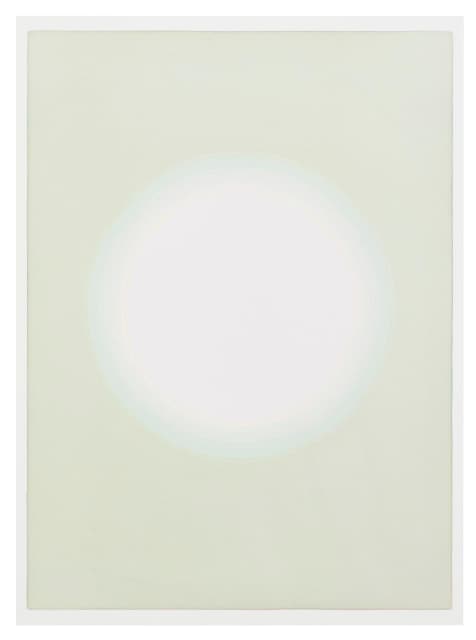
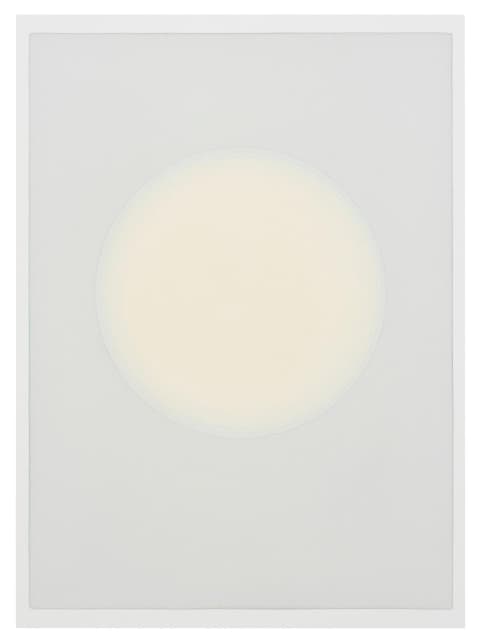
What does it sound like when we become a voice for the planet? Olafur has created Earth Speakr with the studio, kids, creative partners, researchers, and other experts.
Earth Speakr consists of an app and an interactive website (in all 24 official EU languages), as well as physical presentations in key locations. To amplify children’s ideas and concerns about the wellbeing of our planet, Olafur and the team are working with a growing network across the EU, including museums, schools, and libraries to expand the reach of this collective artwork.
The artwork launches officially on 1 July and will evolve over the course of 2020 with the active participation of kids across the EU.
This work is funded by the Federal Foreign Office in the context of the German Presidency of the Council of the European Union 2020 and realised in cooperation with the Goethe-Institut across the EU.
Visit earthspeakr.art
Stella McCartney virtual studio visit with Olafur Eliasson, May 2020
WUNDERKAMMER, 2020, is a new artwork by Olafur with Acute Art. You are invited to create your own cabinet of curiosities in augmented reality by bringing objects, outdoor phenomena, and smaller spatial experiments by Olafur to your home or environment - a sun, a puffin, a ladybird, or flowers, a compass or a rainy cloud. It’s a meeting up of personal space and art.
The Acute App is available both on the App Store and on Google Play.
'Today, where physical distancing guides our lives, it’s as crucial as ever that we surround ourselves with things and atmospheres that really matter to us. All elements of the WUNDERKAMMER play a role in my life. Some are objects that we normally take for granted – and I feel they should be celebrated like the wonders they, in fact, are. Other elements in the collection will be more experimental, such as light sculptures and objects that are invisible to the eye until you ‘catch’ them with your hand. The artwork is about challenging our perception of the everyday and actively welcoming that which lies on the boundary between the known and the unknown. It is about creating spaces that meld the everyday and the extraordinary – spaces that evoke vivid perceptions and embodied engagement.’ - Olafur

Olafur Eliasson, in collaboration with Kumi Naidoo, Weltlupe, 2020.
Commissioned by the BDZV (Bundesverband Digitalpublisher und Zeitungsverleger e.V) on the occasion of World Press Freedom Day, 3 May 2020.
Weltlupe is at once a magnifying glass and a mirror – an instrument for perusal and self-examination. While the reader examines a text on the freedom of press closely through a convex lens, he or she is reflected in the concave mirror in which the lens is mounted.
In English, the text reads:
IF WE ALLOW THE FOLLOWING TO CONTINUE:
THEN READERS AND THE GENERAL PUBLIC ARE DEPRIVED OF THE ABILITY TO EXERCISE THEIR FREEDOM TO DRAW THEIR OWN CONCLUSIONS AND MAKE MEANINGFUL CHOICES IN LIFE
Olafur Eliasson (artist) and Kumi Naidoo (former Head of Amnesty International and Greenpeace) in conversation on the occasion of World Press Freedom Day 2020
OE: Kumi, thanks for talking with me. We’re still in the midst of the Covid-19 pandemic and experiencing an acute need for global collaboration and empathy. With hourly updates, health facts, and strategies for curbing the virus being shared across the world, the freedom of press and unhindered access to precise information is as critical as ever.
KN: Looking at it on a global scale, the urgency of the moment – whether that is to tackle climate change, inequality, poverty or any present-day crisis – is to assert the right of ordinary people, citizens, to have access to high-quality, accurate and diverse media that allows them the capability to make informed decisions. We will never be able to make progress on these crucial issues if they are not able to addressed openly through the media. This poses a big challenge, not only the challenges that these crises bring, but also the challenge to communicate them in a way that is accessible and people are able to engage with.
OE: Yes, I think it’s a really important point that freedom of press affects everyone, all the way from heads of state and other people in power to the individual readers with a newspaper or a tablet in hand. I am particularly interested in emphasizing, as you say, that it’s also about the readers and about seeing them as co-producers. By ensuring the safety and independence of journalists and news outlets, we are also insisting on the right of readers to be given broad and balanced reporting from which to draw their own conclusions about what is happening in the world.
KN: What is the media landscape today? In the past, the reader, the listener, the viewer, were totally passive. But today, access to Social Media has changed this quite considerably and so in that sense I want to endorse the idea of co-creation. If you were to focus on the readers of today and their rights, then there are three: the right to read, the right to know and the right to participate or act.
OE: These rights very much overlap with some of the values that I think define the field of culture. As an artist, I strive to make artworks that open a space for the viewers to articulate their thoughts, dreams, needs, and values. And I hope that my works are felt to be welcoming and to reflect some of these thoughts and emotions. The meeting up of artwork and visitors, the dialogue that opens between them, which is fundamentally defined by trust, is what really interests me. Trust is absolutely urgent to preserve, both in the field of culture and in the media. They are meeting places for evaluating what goes on in the world and for people to feel they are a part of society. And so when we express our gratitude to and respect for journalists and their platforms on World Press Freedom Day, we are, in fact, also celebrating that which enables us all to be engaged citizens.
Olafur Eliasson, Earth perspectives, 2020 (excerpt: Earth viewed from over the South Pole), a part of the Serpentine Galleries’ ‘Back to Earth’ initiative, a new, multi-year project that invites artists, scientists, architects, musicians, and more to make work that responds to the climate emergency. Eliasson originally conceived one Earth perspectives map for Real Review, spring issue 2020, a magazine edited by Jack Self.
Download the full artwork here and feel free to share!
At the centre of the Earth view at the top of this page is the South Pole. The pole is at the heart of the virtually uninhabited continent of Antarctica, a vital ice-covered wildlife haven that is under threat from rapid warming and ice loss. This point on the map is, on one hand, a completely human construct that grants geographical importance to an otherwise featureless location on the globe. On the other hand, it was the presence of this pole in the mind’s eye that enabled early explorers to imagine Antarctica as a real place and travel there, and then for later generations to learn enough about it to know it urgently needs protecting. The pole is like a symbolic pin steadying a precarious landscape that is literally floating away as massive icebergs the size of small countries break off and drift into the ocean. Like the dot in the afterimage, the South Pole’s abstract point is a meeting place between the human mind and a profoundly real landscape that is so far away from us and yet so immediate to climate change. It is the human capacity to imagine the abstract, and to imagine the future, that will determine how the story will continue.

The website for Sometimes the river is the bridge at the Museum of Contemporary Art Tokyo (MOT) is now live. In these times where we stick together by staying apart, I invite you to be among the very first visitors. The site presents all the artworks in the exhibition and focuses on our research into sustainable materials as well as the studio’s steps to think and operate more sustainably.
A really big challenge was to get a number of artworks from Berlin to Japan while keeping the carbon footprint down. First the team had to come up with an alternative ground transport route and to persuade insurers that this route was, in fact, a viable and safe solution. Then we sent the artworks on an unusual journey. They travelled first by truck from Berlin to Hamburg. And then by train to Taicang, China, via Malaszewicze, Poland, and Zabaykalsk, Russia (see the route on the microsite). Once they arrived at the port of Taicang, they were loaded onto a ship to Japan.
I’ve done various drawing machines in the past and, for this journey, we developed new ones that were fitted to each transport crate: a ballpoint pen was held by a mechanical arm so that it moved across the surface of a piece of paper in response to the movements of the crate. The drawing machines became seismographs, recording the rattling and rolling movements of the train and the ship along the way. The outcomes are visual records of the terrain over which the artworks passed. And so the journey became a part of the exhibition: Memories from the critical zone (Germany–Poland–Russia–China–Japan, nos. 1–12). Photo: Kazuo Fukunaga
In these unsettling times, we continue to push the studio’s projects as best we can. Most team members have set up home office and, like others, we’re exploring new forms of digital togetherness.
On Friday last week, Caroline, Dayoung, Christian, Jöran, and Kerstin – from the studio’s exhibition and installation team – finished long-distance installing my solo show Sometimes the river is the bridge at the Museum of Contemporary Art Tokyo (MOT). It’s an important and comprehensive exhibition, conceived with my friend Yuko Hasegawa, an esteemed curator. To install the show, knowledge was transferred from hands and bodies and minds via screen to the physical space at MOT and to the incredibly dedicated museum team. It is reassuring and exciting to know that we can continue to adapt and pull off an exhibition installation like this on time and with great precision without being physically present. The exhibition is currently set to, hopefully, open in a few weeks’ time.
From the very beginning of conceptually developing Sometimes the river is the bridge, informed by talks with Yuko about ecology and climate, we aimed for the exhibition to become a pilot for making exhibitions as sustainably as possible, and the team has put into practice many new decisions to reduce our climate impact. Now we really know what is possible, even from a distance, thanks to the amazing team in Japan who focused on everything down to the smallest details.
Looking back at the exhibition Symbiotic seeing at Kunsthaus Zürich, that due to the circumstances had to end a week early. We're grateful for all the people who went to experience it, and look forward to sharing more impressions from the exhibition over the next days. Also a huge thanks and lots of digital hugs to the fantastic team at the museum who made it all come together!
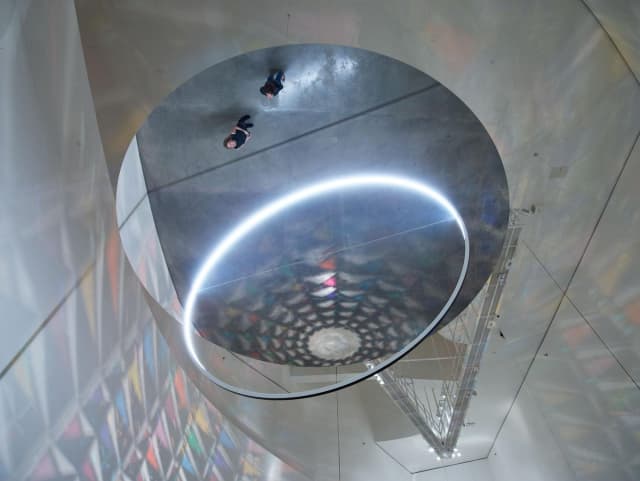
Looking back at the exhibition In real life at Guggenheim Bilbao - which is closed for now. We wanted to thank everyone who went to experience it, and are hoping to welcome you again soon.
We’re happy to launch our project website for Experimenting, Experiencing, Reflecting (EER), a collaboration between science and art led by Olafur and scientist Andreas Roepstorff (Aarhus University), funded by the Carlsberg Foundation (2019–2023). Have a look at the site eer.info

Symbiotic seeing, Kunsthaus Zürich

Earth kaleidoscope, 2006
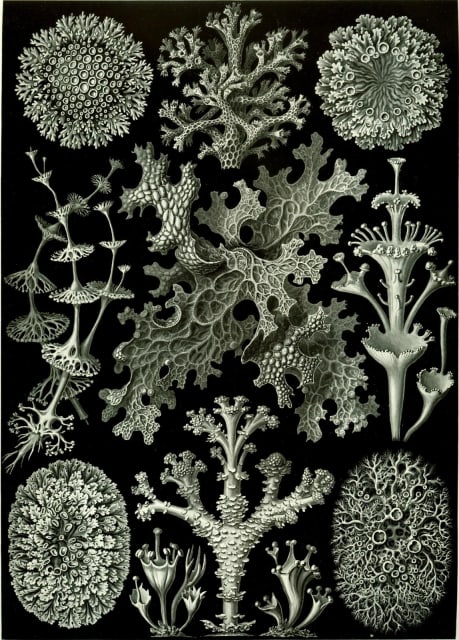
“Lichen are symbiotic assemblages of species: filamentous fungi and photosynthetic algae or cyanobacteria. Lichen are themselves a kind of landscape, enlivened by their ghosts… Lichen are ghosts that haunt us from the past, but they also peer at us from a future without us” - Introduction to Arts of Living on a Damaged Planet. Image: Ernst Haeckel, Lichen, 1904

Moss wall, 1994 - part of In real life, Guggenheim Bilbao

Waterfall, 2019 - part of In real life, now open, Guggenheim Bilbao. Photo: Erika Ede

The glacier melt series, 1999/2019 – part of In real life at Guggenheim Bilbao

Room for one colour, 1997 - part of In real life, Guggenheim Bilbao, opens tomorrow. Photo: Erika Ede
Installing In real life at Guggemheim Bilbao - the exhibition opens Thursday
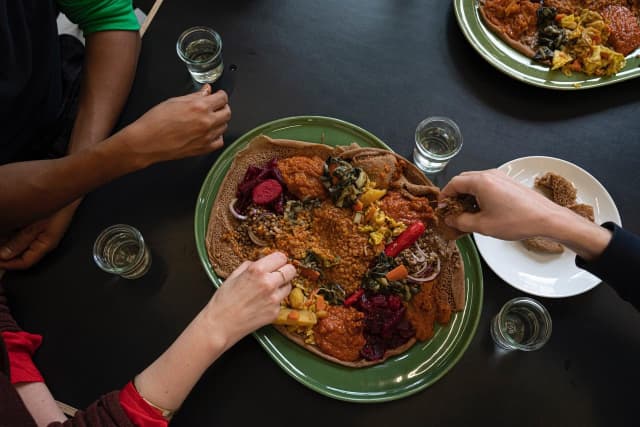
Ethiopean lunch with Henok Getachew